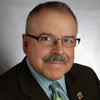
Many may have read about the recent flare-up between Michael Kaiser and Felix Sánchez. Kaiser is President of the Kennedy Center for the Performing Arts and Sánchez directs the National Hispanic Foundation for the Arts, established to advance the presence of Latinos in the media, telecommunications and entertainment industries. Annually, the foundation provides scholarships to eight Latino graduate students.
The Kennedy Center, aside from presenting a diverse performing arts season, stages the annual Kennedy Center Honors, which recognizes lifetime achievement in the arts, tending towards the mainstream, and is customarily attended by the President and First Lady. It is noteworthy to point out that Kaiser has spearheaded technical assistance programs benefiting cultural organizations around the country, many of them struggling, a number of them Latino, and has a solid working relationship with the National Association of Latino Arts and Culture, this country's leading service organization for our field.
As reported by the Washington Post and several other media outlets, when Sánchez called Kaiser to express his inquietude over the relative dearth of Kennedy Center Latino/Latina awardees, a heated conversation ensued where Kaiser used some strong language. News services immediately took note. Some Latino advocacy organizations rallied to the foundation's cause. Kaiser later apologized, acknowledging that his "was an unfortunate choice of words." In his letter of apology to Sánchez, Kaiser stated, "I assure you that the concerns you raised during our conversation were heard and will be given serious consideration." What becomes of the dust-up remains to be seen; however, Kaiser is off to a good start, having initiated a revamping of the selection criteria and process for the Kennedy Center Honors, ensuring representation by more diverse constituencies.
Near the end of the initial Washington Post article, Sánchez stated,
We see that [trend] at the Kennedy Center, the Smithsonian, art exhibits -- we see that across the board in arts institutions: a preference for Latinos who are coming from their country of origin, as opposed to artistic contributions from U.S. Latinos.
As the director of the unit charged with ensuring Latino presence at the Smithsonian, I'm surprised that Sánchez did not contact our office to learn about the Institution's current programs, research initiatives and collecting efforts pertinent to the U.S. Latino community.
The Smithsonian's Under Secretary for History, Art, and Culture and Latino Center, in collaboration with units around the Institution, is engaged in several initiatives by, for and about the diverse resident Latino population. Some are exhibition-focused; others geared to web presence, educational impact, or leadership and professional development. Soon, the Institution will bring on six new Latino curators at five of our key units. Below are other examples of what's happening:
1.Latino DC: An initiative to document the Latino presence in the D.C. metro area, telling the unheard stories of Latinos in the institutions, culture, economy and daily life of the nation's capital;
2.Young Ambassadors: An annual leadership development program for graduating Latino high school seniors, offering internships with cultural and science institutions throughout the U.S. and Puerto Rico;
3.Cerámica de los Ancestros: An 18-month exhibition at the National Museum of the American Indian featuring the ancestral legacy of Central American communities. Three of the top ten U.S. Latino populations are Central American, with the Salvadoran constituting the largest in the D.C. region;
4.Latino Museum Studies: An annual professional development program for Latino graduate students from the U.S. and Puerto Rico.
5.Caribbean Indigenous Legacies: A multi-year project that explores the culture, history and legacy of the Native peoples of the Caribbean basin which will culminate with an exhibition at the George Gustav-Heye Center, the New York City branch of our American Indian museum. It is estimated that over 20% of New York's regional population is Caribbean-rooted, and given that the project looks at the island and continental Caribbean, the project will serve all the top 10 Latino communities in the country.
In juxtaposing country of origin with U.S. Latino, Sánchez raises a vexing question for cultural institutions of all sizes, which is, "How do you represent Latinos and their experiences in the U.S. while honoring the countries from which they hail?" The other day a colleague asked where the Salvadoran community lives. I paused and said that it lives in San Miguel, El Salvador, and in my D.C. neighborhood of Columbia Heights. The point is that for many years a natural confluence of country of origin and community of residence has formed. The remittances of culture and currency continue to (over) flow. Other colleagues in Santiago, Dominican Republic, have told me that renewed interest in Perico Ripião, traditional merengue, in the island is partially attributable to Dominican Americans who play, preserve and contemporize the music with gusto. Physical borders and difficult-to-negotiate immigration policies may stem the flow of people, but not of culture.
There is a well-worn saying in Spanish: No hay mal que por bien no venga. Roughly translated: "There is a silver lining in every dark cloud." My hope is that the recent tiff between Kaiser and Sánchez will give us cause to think differently and more creatively about who, which cultural reference points and which culturally negotiated identities make up the distinct and diverse communities that we call U.S. Latino, so that we are all able to better serve their needs and recognize their accomplishments, now and well into the future.
